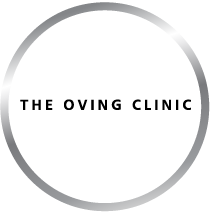Oving Clinic – New Standing CT service
Over the last few months of lockdown under the Coronavirus threat people have been walking, jogging and exercising more than ever. This is good but inevitably for some, this has brought to the surface underlying issues with ankle, foot and lower limb mechanics causing painful problems.
From the last day of July we are introducing a new service for patients. Our ankle and foot surgeon Edward Dawe has identified a need for improved diagnostic imaging for these problems called Standing CT. It is a mobile unit which comes to the clinic once a month.
What is a Standing CT?
Traditional imaging of the foot and ankle involves plain X-rays, which are in 2D. The standard is a view from above and from the side and it is then up to your doctor to estimate how that would look in 3D. Now for the first time, a 3D scan can be obtained in a standing functional position, which gives your doctor a much better picture of what might be wrong and helps them better plan your treatment and recovery. A Standing CT can be used for all conditions affecting the foot and ankle. A standing scan is particularly helpful if your arches are flattened or you have bunions or other toe deformities.
Is the Standing CT scan safe?
It uses Cone Beam CT (CBCT) to produce 3-dimensional images. The radiation dosage is much lower than traditional CT scans and is equivalent to a standard series of X- rays of the foot and ankle. To give you an idea of the radiation exposure, it is similar to that of a flight to Spain.
What is the difference between Cone Beam CT and ‘normal’ CT?
Cone Beam CT (CBCT) uses a concentrated, low-power X-ray beam instead of a fan-shaped, high-output X-ray beam. This results in a lower radiation dosage and means a CBCT is much quicker than traditional “slice” CT. In addition both feet and ankles are scanned at the same time, allowing the opposite side to act as a normal comparison without any significant additional radiation exposure.
How long does a scan take?
A scan is quick and only takes 60 seconds. The total appointment should take less than 15 minutes. Your doctor will then review your images and discuss them with you at your next appointment.
Edward Dawe FRCS John Tanner FFSEM
